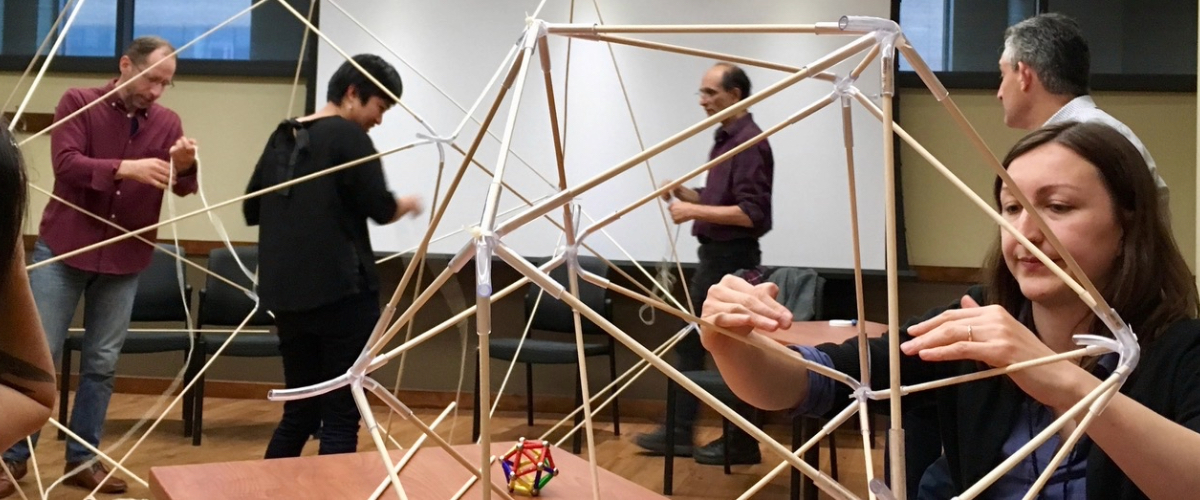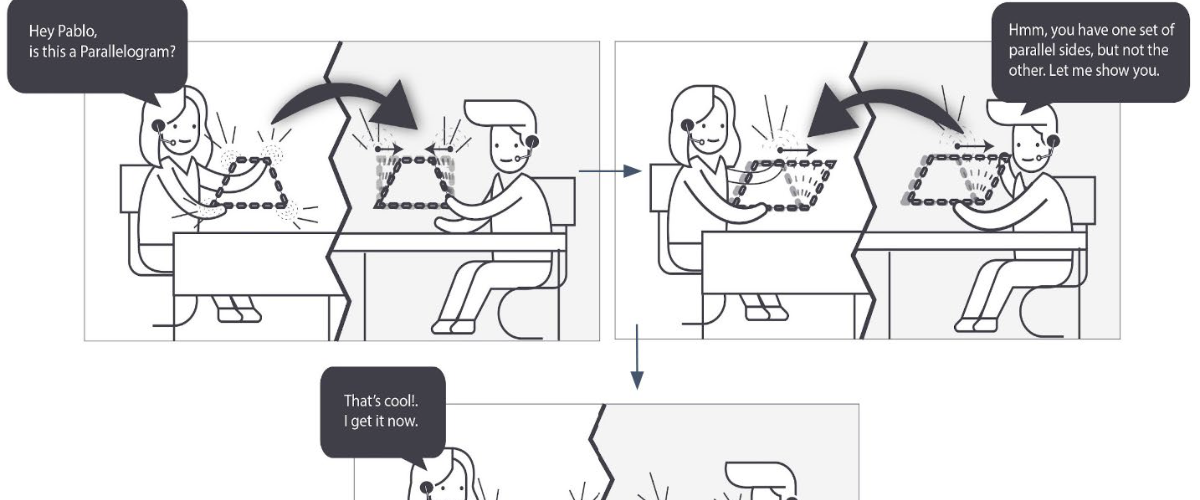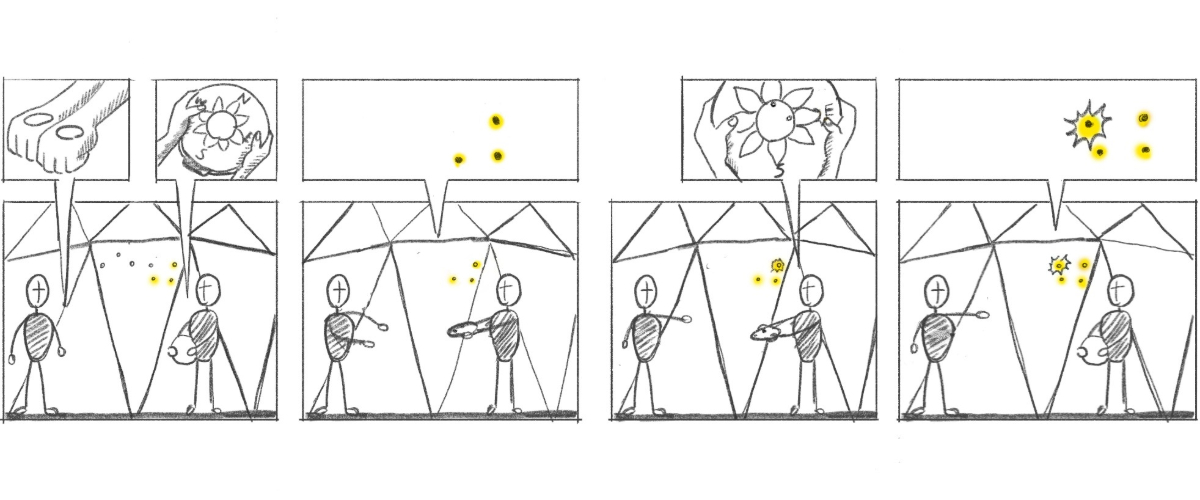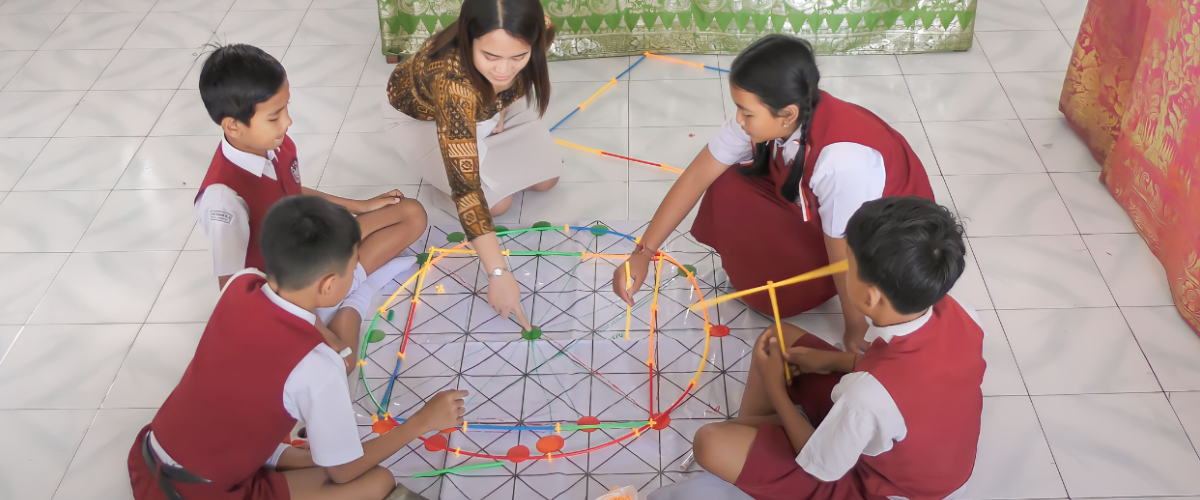- Apprehending Zone
The apprehending zone is a model of student learning in social contexts. AZ informs implementation of constructivist philosophy in the form of objects, activities, and facilitation emphases. AZ foregrounds the complementarity of personal and interpersonal aspects of classroom learning processes. Student learning is interpreted as a personal multi-modal process of linking up situations and representations (see central ...
- Attentional Anchor
Overview
If you were to teach someone to stand with good posture, you might say something like, “Straighten your back, raise you chest a bit, drop and soften your shoulders, tuck your chin slightly, and don’t forget to relax!” A slight exaggeration, perhaps, but nonetheless an illustration of how even seemingly simple physical tasks can be composed ...
- Embodied Design
Overview
The phrase “embodied design” was first coined by van Rompay and Hekkert (2001), industrial designers who used Lakoff and Johnson’s cognitive semantics theory of conceptual metaphor to predict the emotional affect that humans would attribute to architectural structures, such as bus stops. There was also a fleeting unarchived use of the phrase by Thecla Schiphorst, ...
- Embodied Spatial Articulation
Embodied spatial articulation is an individual’s design-facilitated negotiation between personal and cultural resources pertaining to the visuo–spatiality of mathematical situations and representations. The personal resources are proto-mathematical action-based images, and the cultural resources are the appropriate seeing-in-using of classroom spatial–numerical artifacts. Embodied spatial articulation, I conjecture, underpins human interacting with epistemic artifacts historically, developmentally, in the ...
- Learning Axes & Bridging Tools
The learning axes and bridging tools design framework is grounded in research on neo-Piagetian developmental theory (Robbie Case), phenomenological philosophy (Martin Heidegger, Maurice Merleau–Ponty), pedagogy and design (Hans Fruedenthal, Karen Fuson, Ernst von Glasersfeld, Seymour Papert, Uri Wilensky), artificial intelligence (Marvin Minsky), cognitive science (Gilles Fauconnier & Mark Turner), and creativity (George Steiner). To read more about ...
- Platonic Sample Space
The construct of a “Platonic sample space” is a hypothetical pedagogical construct — it is not a mathematical idea but, instead, a bridging form potentially enabling some cognitive entry into the conceptual domain. Drawing a sample from a random generator could be imagined as randomly selecting an event from its sample space. So, flipping a ...
- Reverse Scaffolding
In educational design literature, we often come across the notion of ‘scaffolding.’ This means that a teacher, coach, or parent have optimized the conditions for a novice to engage in enacting some skill even before they have mastered the skill. These supplementary conditions, by way of auxiliary devices or a helping hand, are akin to ...
- Semiotic Leap
The construct “semiotic leap” emerged during collaboraitve microgenetic analysis of empirical data gathered in the Seeing Chance project. The construct attempts to characterize an aspect of student behavior during facilitated engagement with a mathematical activity, particulalrly an activity involving both a realistic problem situation and a formal model of that situation built as a means ...
- Stratified Learning Zone
A stratified learning zone is an undesirable classroom dynamic that may emerge in the implementation of collaborative construction projects. In the SLZ, labor is divided and associated with individual students such that they become “type cast” into a particular task that may or may not foster the development of mathematical knowledge. More formally, the SLZ is a ...





